 When contemporary composer John Muehleisen set Henry Wadsworth Longfellow’s poem “A Psalm of Life” to music, he knew that the poet was not talking about actual weeping numbers in the first line, perhaps a number 7 with tears dripping from the end of the top bar. No. Here the word “number” means a piece, selection, or verse. When we refer to the songs in a Broadway show, for instance, we often call them “number,.” as in “a showstopping song-and-dance number.” Therefore, if we piece together the title, “A Psalm of Life,” the subtitle, “What the heart of the young man said to the Psalmist,” and the first two lines (“Tell me not in mournful numbers/Life is but an empty dream”), we get a message of hope, optimism, and action.
When contemporary composer John Muehleisen set Henry Wadsworth Longfellow’s poem “A Psalm of Life” to music, he knew that the poet was not talking about actual weeping numbers in the first line, perhaps a number 7 with tears dripping from the end of the top bar. No. Here the word “number” means a piece, selection, or verse. When we refer to the songs in a Broadway show, for instance, we often call them “number,.” as in “a showstopping song-and-dance number.” Therefore, if we piece together the title, “A Psalm of Life,” the subtitle, “What the heart of the young man said to the Psalmist,” and the first two lines (“Tell me not in mournful numbers/Life is but an empty dream”), we get a message of hope, optimism, and action.
Read more
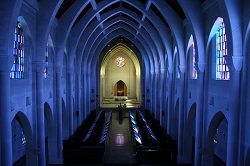 Yes. A full performance of the entire special service in the Russian Orthodox Church can indeed last pretty much all night, but be aware that the time is filled with much more than music–litanies (petitions and responses), Scripture readings, prayers, etc. A composer wouldn’t have to come up with hours and hours of music. Also, the service is often/usually cut, with the full version being performed very rarely.
Yes. A full performance of the entire special service in the Russian Orthodox Church can indeed last pretty much all night, but be aware that the time is filled with much more than music–litanies (petitions and responses), Scripture readings, prayers, etc. A composer wouldn’t have to come up with hours and hours of music. Also, the service is often/usually cut, with the full version being performed very rarely. Yes. A full performance of the entire special service in the Russian Orthodox Church can indeed last pretty much all night, but be aware that the time is filled with much more than music–litanies (petitions and responses), Scripture readings, prayers, etc. A composer wouldn’t have to come up with hours and hours of music. Also, the service is often/usually cut, with the full version being performed very rarely.
Yes. A full performance of the entire special service in the Russian Orthodox Church can indeed last pretty much all night, but be aware that the time is filled with much more than music–litanies (petitions and responses), Scripture readings, prayers, etc. A composer wouldn’t have to come up with hours and hours of music. Also, the service is often/usually cut, with the full version being performed very rarely.
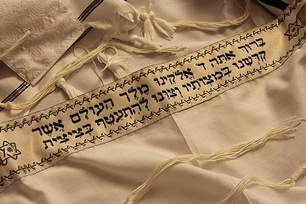 What a wonderful message is contained in this song! Let me answer the question above first, and then I’ll cover some other issues. So the Hebrew words “Hine ma tov uma naim shevet achim gam yachad” are from Psalm 133 in the Hebrew Bible. I have always loved this psalm, and since the entire thing is so short I’m quoting it in full:
What a wonderful message is contained in this song! Let me answer the question above first, and then I’ll cover some other issues. So the Hebrew words “Hine ma tov uma naim shevet achim gam yachad” are from Psalm 133 in the Hebrew Bible. I have always loved this psalm, and since the entire thing is so short I’m quoting it in full: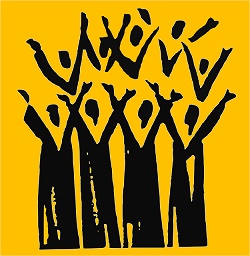 No. Your shinbone is named after an ancient Greek wind instrument, sort of like a flute.
No. Your shinbone is named after an ancient Greek wind instrument, sort of like a flute. So, last night we had the family over to watch the Broncos win over the Chargers (this post was originally written in October 2016), and I was telling my father-in-law about my choir’s upcoming Christmas concert with the Denver Brass, and how they’d be playing with us for the Rutter Gloria, among other pieces, and since he’s a former brass player himself he was quite interested. He looked through the copy I had sitting on the coffee table, taking note of the instrumentation, and then he read the intro material. “Guess where this was first performed?” he asked. “Somewhere in England,” I said. “Nope. Omaha, Nebraska.”
So, last night we had the family over to watch the Broncos win over the Chargers (this post was originally written in October 2016), and I was telling my father-in-law about my choir’s upcoming Christmas concert with the Denver Brass, and how they’d be playing with us for the Rutter Gloria, among other pieces, and since he’s a former brass player himself he was quite interested. He looked through the copy I had sitting on the coffee table, taking note of the instrumentation, and then he read the intro material. “Guess where this was first performed?” he asked. “Somewhere in England,” I said. “Nope. Omaha, Nebraska.”
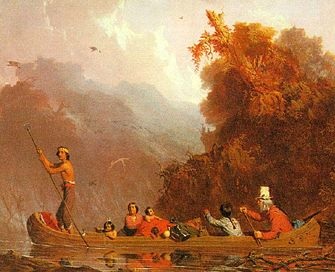
 This is yet another of those songs everybody sings and nobody thinks about. Come on, now. Have you ever asked yourself this question? I sure hadn’t.
This is yet another of those songs everybody sings and nobody thinks about. Come on, now. Have you ever asked yourself this question? I sure hadn’t. When contemporary composer John Muehleisen set Henry Wadsworth Longfellow’s poem “A Psalm of Life” to music, he knew that the poet was not talking about actual weeping numbers in the first line, perhaps a number 7 with tears dripping from the end of the top bar. No. Here the word “number” means a piece, selection, or verse. When we refer to the songs in a Broadway show, for instance, we often call them “number,.” as in “a showstopping song-and-dance number.” Therefore, if we piece together the title, “A Psalm of Life,” the subtitle, “What the heart of the young man said to the Psalmist,” and the first two lines (“Tell me not in mournful numbers/Life is but an empty dream”), we get a message of hope, optimism, and action.
When contemporary composer John Muehleisen set Henry Wadsworth Longfellow’s poem “A Psalm of Life” to music, he knew that the poet was not talking about actual weeping numbers in the first line, perhaps a number 7 with tears dripping from the end of the top bar. No. Here the word “number” means a piece, selection, or verse. When we refer to the songs in a Broadway show, for instance, we often call them “number,.” as in “a showstopping song-and-dance number.” Therefore, if we piece together the title, “A Psalm of Life,” the subtitle, “What the heart of the young man said to the Psalmist,” and the first two lines (“Tell me not in mournful numbers/Life is but an empty dream”), we get a message of hope, optimism, and action. 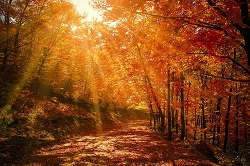
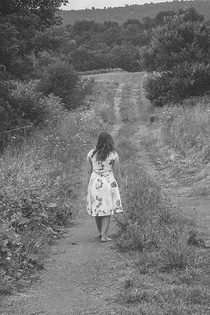 We know that any true folk song will always have multiple versions, since they weren’t composed in any formal way and were passed down orally for some time before being written. One aspect or the other of the original may be prominent in each variant. “Cindy” has an almost infinite variety of verses and also has the characteristic of having been built at least partly from “call and response,” which in this case has someone start out with a line and then others in the group have to come up with a second line that rhymes with the first, whether or not the lines add up to a coherent story. (This type of activity is also common in some churches in which the preacher says something that is clearly asking for a response, even if it’s just “amen.” My favorite such line is something I heard at a wedding I attended many years ago; when the preacher performing the ceremony started to feel that he wasn’t getting enough feedback, he’d say, “Am I talkin’ to anybody out there?” which would be greeted with a chorus of “amens.”)
We know that any true folk song will always have multiple versions, since they weren’t composed in any formal way and were passed down orally for some time before being written. One aspect or the other of the original may be prominent in each variant. “Cindy” has an almost infinite variety of verses and also has the characteristic of having been built at least partly from “call and response,” which in this case has someone start out with a line and then others in the group have to come up with a second line that rhymes with the first, whether or not the lines add up to a coherent story. (This type of activity is also common in some churches in which the preacher says something that is clearly asking for a response, even if it’s just “amen.” My favorite such line is something I heard at a wedding I attended many years ago; when the preacher performing the ceremony started to feel that he wasn’t getting enough feedback, he’d say, “Am I talkin’ to anybody out there?” which would be greeted with a chorus of “amens.”)